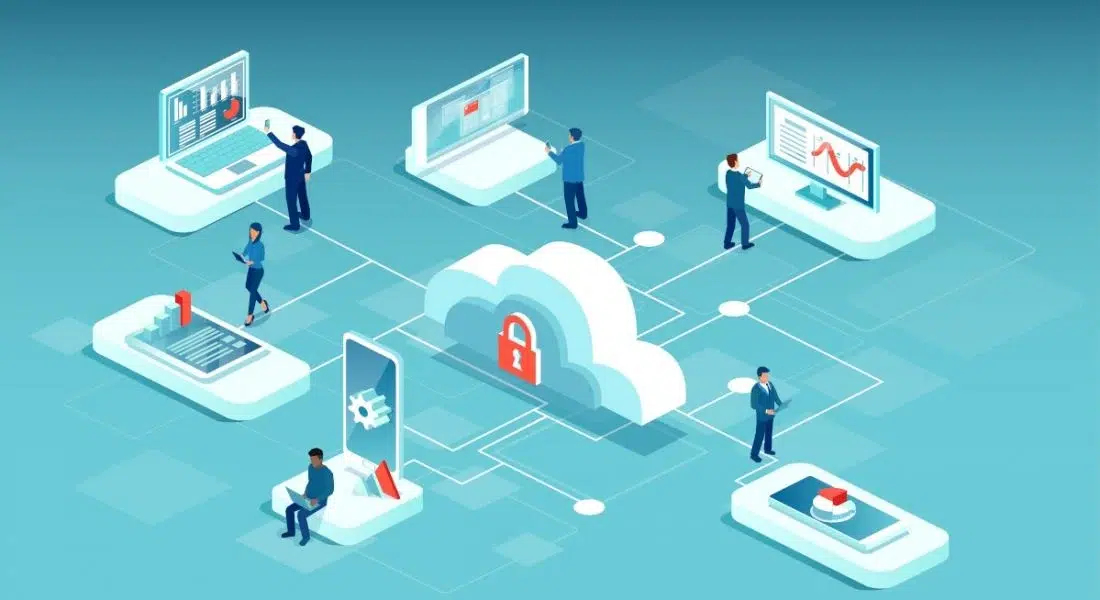Maximizing Efficiency and Savings: Cost-Beneficial Strategies for SMEs
In today’s fast-paced business world, Small and Medium Enterprises (SMEs) are continually searching for methods to enhance efficiency and reduce operational costs. Technological advancements, such as cloud computing, have opened new avenues for cost savings and increased productivity. However, the potential for optimization extends far beyond the cloud. This article explores a range of cost-effective strategies, including cloud migration, that SMEs can adopt to remain competitive and maintain financial health. Check out cost beneficial strategies for SMEs.
Table of Contents
Cloud Migration – A Cost-Benefit Analysis for SMEs
In an age where digital efficiency is paramount, SMEs face the crucial decision of migrating to cloud servers. This move is more than a technological shift. It’s a strategic realignment that offers scalability, agility, and significant cost savings. This section will explore the financial and operational impacts of cloud migration, providing a comprehensive analysis of its benefits and challenges for SMEs.
Understanding Cloud Migration – Strategies for SMEs
Cloud computing is revolutionizing the way businesses operate, offering more scalability, accessibility, and, importantly, potential cost savings compared to traditional IT infrastructure. For SMEs, migrating to cloud servers means accessing advanced technology without the hefty price tag of setting up and maintaining physical servers. The transition to the cloud also enables businesses to respond more rapidly to market changes, as cloud services can be quickly scaled up or down. Furthermore, cloud computing facilitates remote work, allowing employees to access company resources securely from anywhere, increasing productivity and flexibility.
Calculating the Costs
The initial investment in cloud migration might seem daunting, but weighing this against long-term savings is crucial. Cloud servers reduce the need for physical hardware, lower maintenance costs, and offer scalable solutions that grow with your business, thus providing a more cost-effective approach in the long run. The operational agility offered by cloud computing can also lead to indirect savings, such as improved customer satisfaction due to faster service delivery. Additionally, the pay-as-you-go pricing model of many cloud services helps SMEs avoid large upfront investments, turning capital expenditure into operational expenditure.
Automation Tools Strategies for SMEs – Streamlining Operations
The integration of automation tools in business processes is a transformative step for SMEs, aiming to boost productivity and minimize costs. Businesses can allocate their resources more effectively by automating repetitive and time-consuming tasks, focusing on growth and innovation. In this section, we will examine how automation tools can streamline operations, leading to a more efficient and cost-effective business model.
Introduction to Business Automation
Business automation utilizes technology to perform repetitive tasks, reducing the need for manual labor. This saves time and minimizes human error, leading to more efficient business processes. Automation in areas like customer service with AI chatbots or in marketing through automated email campaigns can significantly enhance customer engagement and retention. Automating data entry and report generation also frees up valuable employee time for more strategic tasks, potentially driving business growth.
Cost Savings Through Automation
By implementing automation tools like Customer Relationship Management (CRM) systems and accounting software, cost beneficial Strategies for SMEs can see a significant reduction in labor costs and an increase in overall efficiency. Automation ensures that resources are allocated to more strategic, growth-oriented tasks. For example, automating inventory management can lead to better stock control and reduced wastage, while automated billing systems ensure timely invoicing and improved cash flow. Furthermore, the data collected through these automated systems can provide valuable insights for decision-making, helping SMEs to identify areas for cost reduction and efficiency improvements.
Remote Work Solutions – Reducing Overheads
The shift towards remote work has become a prominent feature of the modern business landscape, offering SMEs an opportunity to reduce overheads while maintaining productivity. A crucial aspect of this transition is comparing computer needs to ensure employees are equipped with the right technology for effective remote work. This involves assessing the specific hardware and software requirements that align with various job roles and ensuring that these resources are cost-effective and capable of supporting remote tasks. This section will delve into how remote working solutions can lead to significant cost savings in areas such as office space and utilities while also considering the necessary investments in technology and infrastructure to make remote work effective and secure.

The Rise of Remote Work
The recent shift towards remote work offers a unique opportunity for SMEs to save on overhead costs as cost beneficial strategies for SMEs. With employees working from home, businesses can scale down office spaces and save on utility bills. This transition also opens up a broader talent pool, as geographical limitations are no longer a barrier to hiring. Moreover, remote work often leads to higher employee satisfaction and retention, as it offers greater work-life balance, which in turn can reduce recruitment and training costs.
Cost Implications
The savings on physical office space are substantial. However, this needs to be balanced with investments in remote work infrastructure, such as secure internet connections and collaboration tools, to ensure productivity is not compromised. Investing in robust cybersecurity measures is also critical to protect sensitive data when employees are accessing systems remotely. Despite these initial investments, the overall reduction in operational costs, along with the potential for higher employee productivity, makes remote work a financially sound strategy for many SMEs.
Energy Efficiency – Cutting Down Operational Costs: Strategies for SMEs
Adopting energy-efficient practices is beneficial for the environment and a strategic move for SMEs looking to reduce operational costs. This section will focus on how energy efficiency can be a cost-effective approach for businesses, exploring various practices and technologies that can reduce energy consumption and lower utility bills while also enhancing the company’s sustainability profile.
Energy-Saving Practices
Adopting energy-efficient technologies in the workplace, like LED lighting and energy-star-rated office equipment, can lead to significant cost savings in the long run. Simple changes, such as optimizing heating and cooling systems and encouraging energy-saving habits among employees, can also contribute to reduced energy bills. Moreover, embracing green technologies can enhance a company’s brand image as environmentally responsible, potentially attracting more customers.
Cost-Benefit Analysis Strategies for SMEs
The initial investment in energy-efficient technologies pays off over time. Reduced utility bills and maintenance costs contribute to the overall financial health of the SME. Furthermore, some governments offer incentives and rebates for businesses that implement energy-saving measures, providing an additional financial boost. By reducing their carbon footprint, SMEs save money and contribute to the broader effort of environmental conservation.
For SMEs, the journey to financial optimization involves a blend of technology adoption and operational adjustments. From migrating to cloud servers to embracing business automation and remote work for cost beneficial strategies, the options are plentiful. The key is aligning these strategies with the business’s unique needs, ensuring a balanced approach to cost savings and operational efficiency.
What are the successful strategies of SMEs?
– Customer orientation: SMEs can focus on building long-term relationships with their customers by understanding their needs, preferences and feedback, and providing them with high-quality products and services that add value to them.
– Collaboration: SMEs can benefit from partnering with other businesses, organizations or institutions that can complement their strengths, provide them with resources, expertise or access to new markets, or help them overcome their weaknesses or challenges.
– Digitalization: SMEs can use digital technologies to improve their efficiency, productivity, quality and innovation, as well as to reach new customers, markets and opportunities. Digitalization can also help SMEs reduce their costs, risks and environmental impact.
– Human capital: SMEs can invest in their human resources by attracting, retaining and developing talented and motivated employees who can contribute to their success. SMEs can also foster a positive organizational culture that encourages learning, teamwork, diversity and inclusion.
How should SMEs devise their innovation strategy?
– Identify the main challenges and opportunities for your business in the current market.
– Define your vision, mission and goals for innovation and align them with your overall strategy.
– Assess your internal and external capabilities and resources for innovation and identify any gaps or needs.
– Choose the most suitable type of innovation for your business (e.g. product, process, service, business model, etc.).
– Develop a clear and realistic action plan for implementing your innovation projects and activities.
– Monitor and evaluate your innovation performance and outcomes and adjust your strategy as needed.

With more than 20 years of progressive experience as Program Manager and Project Manager had led complex IT projects/programs in a wide variety of industries in America, Latin America & Italia.
Mario Bisson Andini is an advanced Program Manager who is the founder of Bisson Training.











